Understanding Your New Dog’s Body Language
What does it mean when your pup raises their eyebrows, pulls their ears back, or yawns a lot? Read on for all the answers.
What does it mean when your pup raises their eyebrows, pulls their ears back, or yawns a lot? Read on for all the answers.
by Vivian Zottola, MSc, CBCC, | October 28, 2024

Mdv Edwards / Adobe Stock
Investing some time reading your new dog’s body language is not just a no-brainer, it’s a gateway to a deeper connection and a happier, healthier pet. Dogs can communicate subtly. For instance, a turn of the head, lift of the front leg and paw, or lip lick may seem inconsequential — but depending on what’s occurring around your dog, it could mean they need your help.
Understanding your dog’s feelings will empower you, giving you the inside scoop on how to train them better and keep them happy. Here’s a guide to help you learn how dogs use body language to communicate their intentions and feelings.
Dogs communicate using body movement, smells, and vocalizations, such as barking, grunting, moaning, and growling. But context is vital, too, because some expressions can have dual meanings. Sharpening your observational skills, especially in a given situation, helps you to make the right choices for your pets.
Many look to the tail for insight into how a pup feels, but dogs also offer meaningful facial expressions, from their eyes to their eyebrows to their ears. It is also very important to consider the dogs’ learned experiences (if known) and surroundings when interpreting these body movements. Below, you’ll find six key body language cues to watch for in your dog.
All animals establish personal space or boundaries to feel safe. A dog’s proximity to people and other dogs communicates how they feel about any given situation. When a dog moves closer or farther away from you, they indicate interest in interaction at that moment. Respecting a dog’s choices, including providing them with space, goes a long way to developing trust faster.
Dogs who create more space: The less secure a dog feels, the larger their “personal space bubble” becomes and the more distance they need. If a dog feels restricted, say they are up against a wall or fence, they may turn their head to let you know they need some room.
Dogs who freeze: When dogs are terrified, they might become unable to move, which is called the freeze response, or they may crouch low and pace back and forth. Creating some distance from a perceived threat usually helps dogs decompress in these situations.
Scan your whole dog’s body, starting with the face and then moving down the length of the body to the tip of the tail. This will help you be more on point when interpreting their feelings.
Dogs with soft eyes: Soft or squinty eyes tell you that your dog feels relaxed, perhaps even lovingly looking at something. Soft eyes and open mouths reveal dogs who are content in the moment.
Dogs with wide eyes: Depending on what is occurring, your dog’s wide eyes (and showing more of the white of their eyes, known as whale eye) may indicate uncertainty and the need for space. On a positive note, dogs can get wide-eyed when playing or racing around with the “zoomies” before bed.
Dogs with raised brows: When they feel fear or apprehension, some dogs may raise their eyebrows with wide eyes.
A dog’s ears are their “telescope,” so to speak, letting you know what they are focused on. Some dogs can rotate their ears separately, picking up sounds in various locations to point where things are coming from. A dog’s ears also move to you know how their feelings are at a given moment.
Dogs with their ears erect: When a dog’s ears are up, this is an indication they are alerted to something in the environment. However, their ears may be up at attention when alert and excited in a good way or on guard and weary or feeling insecure, depending on the context.
Dogs with their ears down: Generally, and depending on the situation, when a dog’s ears are down and to the side, this may mean a secure, relaxed state.
Dogs with their ears back: When a dog pulls their ears back, flat against their head, that can mean fear, submission, and fawning.
Dogs with their mouth closed: A closed, tight muzzle tells us a dog is processing information about its surroundings or something internal is going on (like, they may not feel well). They are most certainly thinking about something.
Dogs with their mouth open: An open mouth tells you their muscles are relaxed, and your dog is content, satisfied, or even happy.
Dogs who yawn: An open mouth — specifically, yawning and panting — may suggest they’re in distress.
Unlike others in the canid family (foxes, coyotes, wolves), dogs have evolved to use tail-wagging behavior to communicate with people and other dogs. A tail wag’s speed and direction help inform you if your dog feels fear, happiness, or trepidation. Learning to interpret a new dog’s body language requires practice and observation. When analyzing your dog’s tail, consider the position, pace, and trajectory of movement.
The tail may move from side to side and change position, rising and falling to display positive and negative feelings. This can change by the minute.
Dogs with erect tails: A high tail shows increased arousal and can be a signal of self-confidence. A tail that looks like a post, straight up and down, suggests a pup is uncertain and on alert about a situation.
Dogs with tails between their legs: A tail on the opposite end of the spectrum, flat against a dog’s tummy or between their legs, tells us they are feeling extreme fear. If the tail carriage is held low for a while, it can also tell us that a dog is in pain.
Dogs with loose tails: When the tail is held somewhere in the middle, they are generally feeling relaxed and content.
Whether high, low, or in the middle, the placement of a tail and its movement will tell you plenty about how your dog feels.
Dogs with tails wagging on the right: Studies have shown that dogs like what they see in front of them if their tail wags to the right.
Dogs with tails wagging on the left: If they wag to their left, they are letting you know they need some help. While wagging to the left, they may want to withdraw from an interaction (such as an aggressive situation or an unfamiliar dog), which is particularly important if leashed up on a walk.
Dogs with quick side-to-side tail wagging: Short, quick movements may seem like the dog is joyous. However, this is often an indication of some distress. Quick, short wags may tell you that your dog is feeling trepidation or uncertainty about something.
Dogs with slow side-to-side tail wagging: A slow, methodical swinging tail suggests uncertainty as well.
Dogs release sweat through their tongue, breath, and from their paws. If you notice wet paws, it may also mean they’re in distress.
Dogs lifting paws: If you observe your dog lifting their leg or paw and didn’t ask them for a shake, this is an indication of internal conflict. They are confused about something, experiencing some trepidation, or may be in pain.
A dog’s stress responses tell how they feel in a situation. In addition to listening to their vocalization patterns (like barking and moaning), their physical behaviors can help reveal their underlying feelings of contentment or stress.
Dogs under stress often exhibit “erratic” behaviors (also called fidgeting), such as excessive pacing, scratching, licking, chewing, yawning, or shaking. They may also fawn over you, seeking constant attention or leaning on you for comfort. A joyous dog may display these behaviors as well — so how can you tell the difference? It’s all about regulation.
A stressed dog may pant with an open mouth or pace back and forth and seem unable to settle. When your dog is anxious and unsure, they generally want to distance themselves from whatever is scaring them. Some pups may even relieve themselves (pee or poop) due to this distress.
With happy dogs, you may see open mouths, jumping, and difficulty settling too. However, the difference is that a joyous adult dog will not pace or be constantly on edge — they can, in contrast, regulate themselves.
If you’re wondering if your dog is happy, look to their actions and body language cues (such as loose tail wagging, down ears, open mouth).
Here’s how you can sense their overall happiness.
Take time to track and journal your dog’s feelings by observing their behaviors.
Look at how they respond to various circumstances, and if they create distance or not.
Track how they use their body parts independently (or as a whole) to communicate their intentions with you and others.
When learning to interpret a new dog’s body language, it is essential to remember that each dog is an individual. Some dogs, for example, may have been isolated for a long time, and punished for expressing joy and barking. These dogs may rely on different modes of communication to express their needs.
By listening with your eyes, you’ll uncover all your dog’s feelings and thoughts, building a better understanding of your pet dog’s needs. If you’re ready to learn more, check out my book Being a (Good) Dog in the Human’s World, about canine body language.
Some anxious and joyous behaviors look similar and are sometimes difficult to discern, even by a trained eye. Dogs showing stress or anxiety often fidget, pace, exhibit erratic movements, and struggle to calm down. While joy can also cause behaviors such as jumping, anxious dogs are unable to self-regulate as easily and may stay hyper-vigilant or unsettled for longer.
Raising a friendly puppy requires exposure to the world they will live in, including your home, neighborhood, and everyone existing in it. Why? Because young dogs should not be overloaded with stress.
A Dog Tail for Utility Robots: Exploring Affective Properties of Tail Movement
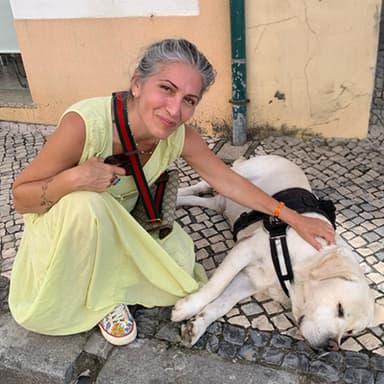
Vivian Zottola, MSc, author of the nonfiction book Being A (Good) Dog In The Human’s World, is a member of the Dog Writers Association of America, and research associate with the Center for Canine Behavior Studies, Inc. She runs a private practice specializing in the prevention and resolution of behavior challenges between humans and pet companion dogs. Find more information at www.VivianZottola.com and Instagram @vivianzottoladogbehavior

Behavior & Training

Adoption Advice

Behavior & Training
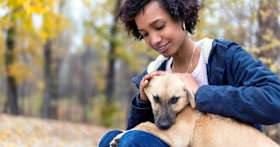
Behavior & Training

Behavior & Training
Consider this your guide to keeping the peace in your home, from spotting conflicts between your dogs to stopping them and preventing them in the first place.
Behavior & Training
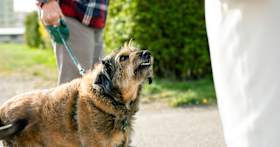
Behavior & Training
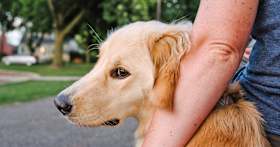
Behavior & Training
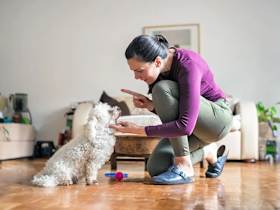
Behavior & Training